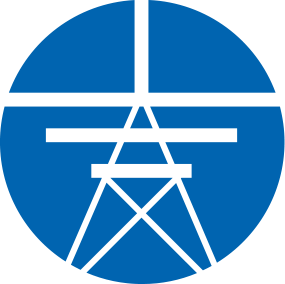Feasibility study grid coupling transformer ”zero current blocking transformer”
This feasibility study examines the basic operating behavior of a transformer for the traction power supply. The 110 kV-16.7 Hz traction power grid in Austria is operated compensated. In order to limit a possible fault, the network is divided into sections that are isolated from each other. Currently, network coupling transformers with a transformation ratio of 110 kV:110 kV are used for this purpose. The disadvantage of this method is that the number of required coupling transformers increases with the length and number of cable sections in the network. The losses in the network also increase with the number of line coupling transformers.
The new transformer design is based on the principle of a common mode choke. The transformer windings are connected in series with the two phases. One phase acts as the forward conductor, the other as the return conductor. Under normal operating conditions, the total magnetic flux from both phases is zero, since there is a phase offset of 180° between the two currents. In case of a fault, the currents are different in amplitude and possibly also in their phase position. Thus the total magnetic flux in the transformer core is not equal to zero and a voltage induction takes place in both phases. This increases the effective impedance of the transformer in the two phases, which leads to current limitation.
Compared to a mains coupling transformer, the new transformer design, hereinafter referred to as zero current blocking, offers the advantage of lower losses during operation as well as smaller dimensions.
In the feasibility study, the electrical operating behavior of the zero-sequence current cut-off is investigated under various operating or fault conditions. In addition, a concrete electrical and mechanical design of the zero-sequence current cut-off device is created and the characteristic data is shown. Especially the thermal behavior and the "Loss-of-Life" are in the focus of the investigations.
Fig. 2 shows the simulated current and voltage curves of the network section from Fig.1. For the left-hand curves, the two cable sections were connected directly to each other; for the middle curves, the two cable sections were connected with a conventional dome transformer, and for the right-hand curves, the zero-sequence current blocking transformer was placed between the two cable sections. In this case, the behaviour of the "zero-sequence current blocking transformer", with regard to current and voltage, is identical.
Publications
Polster, C. S; Albert, D.; Renner, H.; Obkircher, C.; Rader, G.
Zero-sequence current blocking device for two phase AC systems
In: 54th International Universities Power Engineering Conference,Bucharest, 2019, Conference Paper and Presentation; DOI: 10.1109/UPEC.2019.8893601.
Obkircher, C.
“Device for reducing earth leakage current,” European Patent EP2362514A2, Aug. 31, 2011.
|
|
|
|
|
|

